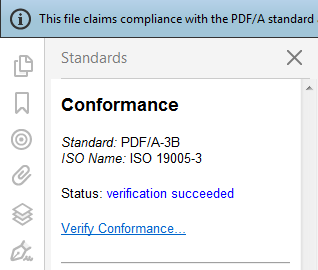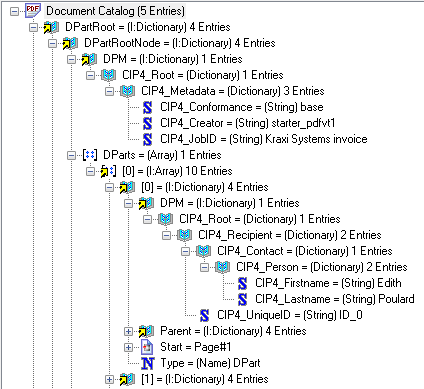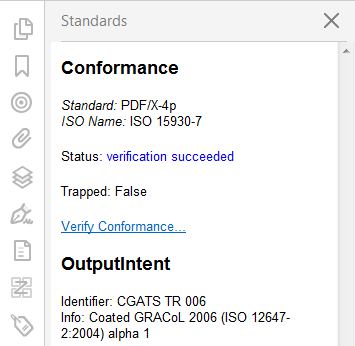PDF 2.0 (ISO 32000-2): Existing Features from PDF Standards
Several PDF 2.0 features have been specified in PDF sub-standards published years before the advent of PDF 2.0. Some of these features are supported in Acrobat:

- PDF/A-3 according to ISO 19005-3 allows arbitrary file types as attachments. These file attachments can be associated with the whole document, a page, or some other part of the document. The relationship between the attached file and the corresponding part of the document can be specified. For example, office documents or spreadsheets could be associated with the whole document or a table on a page and designated as source document. An XML file with the underlying data for some graphics could be designated as supplemental data. The PDF constructs for associated files and attachment relationship are included in PDF 2.0. It adds several new relationship keywords, e.g. FormData and Schema.
Associated files play a crucial rule in the PDF/A-based invoicing standards ZUGFeRD and Factur-X. For more details refer to the PDF 2.0 Application Note 0002: Associated Files, published by the PDF Association.
The topic associated_files in the PDFlib Cookbook demonstrates how to attach associated files to various locations in the document with PDFlib, including the document itself, a page or a Form or Image XObject. The topic retrieve_associated_files in the pCOS Cookbook demonstrates how to retrieve associated files from a PDF document with the pCOS interface.

- PDF/VT according to ISO 16612:2010 introduced new PDF constructs. The Document Part (DPart) hierarchy specifies the sequence and relationship of logical documents or parts of documents within a PDF file. For example, consider a mailing to thousands of recipients where all letters are contained in a single PDF. Pages belonging to recipients in the same country could be grouped in the same DPart, the next hierarchical DPart level contains pages for all recipients with the same ZIP code, etc. DParts can also be useful when merging documents.
Document Part Metadata (DPM) can be used to communicate information about a particular recipient’s sub-document and its parts. In particular, properties which are relevant for production (e.g. number of copies of a document part) or information about the recipient (e.g. the corresponding ZIP code) can be encoded in DPM. Both DPart and DPM are included in PDF 2.0. The new standard even supports associated files linked to DParts. In addition, the new action type GoToDPart has been defined in PDF 2.0 which can be used to create bookmarks or buttons which jump to a specific document part independent of its actual page number.
PDF 2.0 defines only the syntax for storing DPart metadata in PDF documents. The semantics of the metadata will be standardized in ISO 21812-1 »Print product metadata for PDF files«.

- PDF/X-4p according to ISO 15930-7:2010 allows output intent ICC profiles to be kept external from the PDF data structures. »External« means that the ICC profile is not directly included as a resource in the PDF object tree, but may be referenced via URL or even embedded in the PDF document. This PDF/X-4p feature is realized as an extension to ISO 32000-1 which is included in PDF 2.0.
In PDF/X-5n this construct is applied to N-colorant ICC profiles (color space xCLR, where x is a hexadecimal digit in the range 2 to F, i.e. 2CLR...FCLR for 2...15 colorants) which are otherwise not supported in PDF. However, PDF 2.0 still doesn’t support N-colorant ICC profiles.
